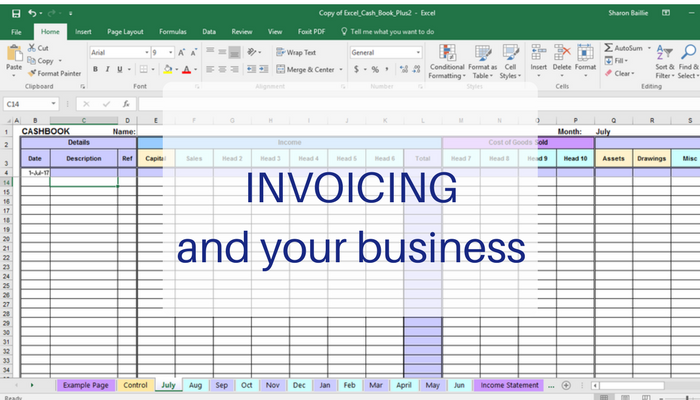In order to maintain cash flow in your business it is important to invoice your customers promptly and ensure that the payment process is easy.
This process should begin from the first customer transaction by including your terms and conditions at the proposal/quotation stage.
You should take steps to obtain all your customers business (and if necessary personal) information to set up their account.
Invoice Information
Your invoice should have all the information your customer needs to know to pay you on time and as well as details for your own bookkeeping.
Business details to include
- business name and if applicable trading name
- postal address and or email address, website address, contact telephone and facsimile numbers
- Australian Business Number (ABN) or Australian Company Name (ACN)
Customer details to include
- customer’s contact details including mailing and/or email address and phone number
- customer number (if applicable)
- details of the person that placed the order
- name of the person responsible for paying the invoice. Addressing the invoice to the right person may help in getting faster payment
- a purchase order number (if applicable) or contract agreement dates. A PO is your customers reference to the account and may be required when talking with your customer about the order.
The Invoice
- The date you raise and send the invoice. This is especially important if your invoice has payment terms such as ’30 days from invoice date or 30 days from End of Month’.
- Invoice number. This is useful for your bookkeeping records, as a reference if talking to your customer or when following up unpaid invoices.
- Job number (if applicable).
- Goods and Services Tax (GST) If you are registered for GST you must include this on your invoice. The document must be called a Tax Invoice. The Australian Taxation Office (ATO) requires specific company and sales information to be included to issue a valid tax invoice.
If you are not registered for GST you can only issue an invoice. - amount due
- description of goods. List the products or services provided.
Itemising can help if referring back to the invoice at a later date. - payment terms
- payment due date
- payment options, standard options are direct deposit, credit card, EFTPOS, cash
- direct banking details, BSB number and bank account number, bank account name. The bank and branch may be included but are not necessary.
- reference detail to be included in the transaction to identify their payment. This will assist with bookkeeping records.
Using accounting software
There are many paid and free accounting software packages that will generate invoices from the business information that you completed in the set-up process. Ensure that all customer information is recorded correctly.
Basic processes for fast payment
To encourage your customers to pay your invoices on time your business should:
- invoice in a timely manner. For ongoing/recurring services invoice on the same date each month or at regular intervals. For goods and services invoice when the order is completed.
- consider invoicing at the start of large projects by obtaining a deposit.
- stay in contact with customers, good customer service will go a long way to resolve any disputes early. It is also a good opportunity to ensure client information is kept up to date.
- include your payment options and details on all invoices.
- follow up promptly if payments are over the due date.
Record Keeping
It is not necessary that you pay for or use online software accounting packages. Many businesses can and do operate on sending invoices from templated word documents and updating their record keeping on spreadsheets. What is necessary is ensuring that the correct information is recorded on all documentation.
If you need assistance with your bookkeeping or would like a basic spreadsheet to keep your records out of an old shoebox, contact Baillie Admin Services


Recent Comments